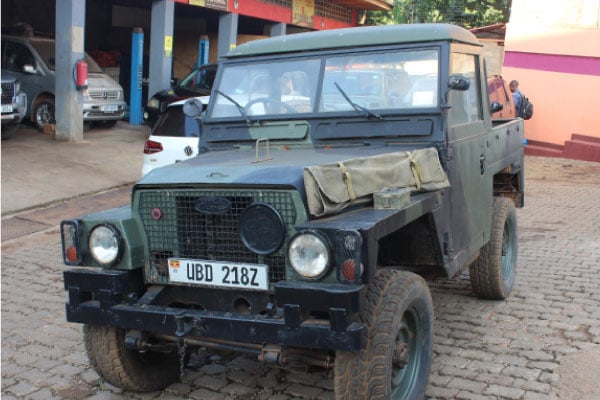Prime
Hyundai Tucson offers a quiet driving experience

Tucson Hyundai has better and bigger interior space compared to its predecessors. It has space on the sides of the spare tyre to accommodate a sizable luggage. PHOTO | ROLAND D. NASASIRA
What you need to know:
- The Tucson Hyundai has better and bigger interior space than its predecessor. Every passenger can adjust their AC temperature courtesy of the well distributed vents.
On a Thursday morning, I set out to test drive a low specification (spec) version of the Hyundai Tucson 2023 model. The objective of the test drive was to find out the car’s performance at low and high speed, interior and exterior features and the comfort it gives, as some of the aspects prospective motorists consider before or when buying a car.
My starting point was at Kitgum House at the Jinja Road junction in Kampala. The journey plan was to drive along Yusuf Lule Road via Mulago and Makerere areas and connect to the Northern Bypass at Bwaise to Busega, turn around and go to Naalya, Ntinda, Kololo and back to the City.
Because of slow traffic in some areas, in the three-hour test drive, one of the first features I noticed about the Tucson, a sport utility vehicle (SUV) by design was that SUVs of the same classification of the Tucson such as the Toyota Harrier previously predominantly run on engines sizes of between 2400cc to 3000cc and relatively bigger bodies.
Acceleration
Even with a smaller engine of 2000cc and an averagely big body, the Tucson gives you the required speed without compromising fuel efficiency and economy and performance power. For example, along the Northern Bypass at Busega towards Naalya, it takes about 10 seconds to move from zero to the 100kilometres per hour mark.
As it picks up speed, the engine does not only produce a sport car engine sound but for safety, the central lock is automatically engaged in case you forget to lock all the doors.

When reversing, the smart screen shows you blue and yellow lines. Blue shows where the car is parked and yellow shows where you are directing the tyres to go.
The accessories
The Tucson is fitted with an eight inch smart screen that is strategically positioned at the centre of the dashboard. It is from the smart screen where you control the infotainment volume but also connect your phone to the car system via Bluetooth. This enables you to answer calls by pressing the answer buttons on the steering wheel .
The three-passenger seats all come with universal serial bus (USB) 12 volts charging ports. The driver and co-driver seats have a wireless charging system in the high spec version of the Tucson in the middle consul, just below the smart screen.
Unlike the ordinary cars whose handbrake is engaged with the foot, engaging and disengaging the handbrake of the Tucson is a gentle push and lifting of a button on the middle consul next to the cup holders.
It has space on the sides of the spare tyre that can accommodate a sizable luggage. The leg room for the occupants , and the space between the car roof and the passenger heads is comfortable for all heights and posture.
The different Tucson versions
Mary Nyamakyeza, the Sales Account Manager at Hyundai says the Hyundai Tucson comes in two versions; the low specification and high specification versions. The difference is that the high specification version has improved features compared to the low specification version.
However, when you look at both versions from the outside, they are the same not only in body aesthetics but also same engine sizes (2000cc).
Some of the differing features are in car performance. For instance, whereas the high spec version runs on a four wheel drive (4WD), the low spec is two wheel (2WD), meaning it generates its wheel power from the front wheels. Also, the high spec version is manufactured to run on a diesel engine while the low spec version was manufactured to run on a petrol engine.
In terms of performance, the high spec Tucson version runs on 183 horsepower (HP) while the low spec version runs on 154 horsepower. There is also a difference in terms of torque, with the high spec version being an eight automatic transmission and the low spec version with a six automatic transmission system.
Whereas both versions of the Tucson are five door SUVs, they also have the same dimensions, wheelbase, rim sizes of 17 and 18, and similar full fuel tank capacities of 54. For urban drives, the Tucson gives you 10km to 12km per litre of fuel and approximately 15km per litre for highway drives.
The downside of the Tucson is that the low spec version only has four parking sensors at the rear but the high spec version has both at the front and the rear. This means that you have to rely on the driving mirror when parking in reverse or directions from someone to avoid knocking objects in reverse.




